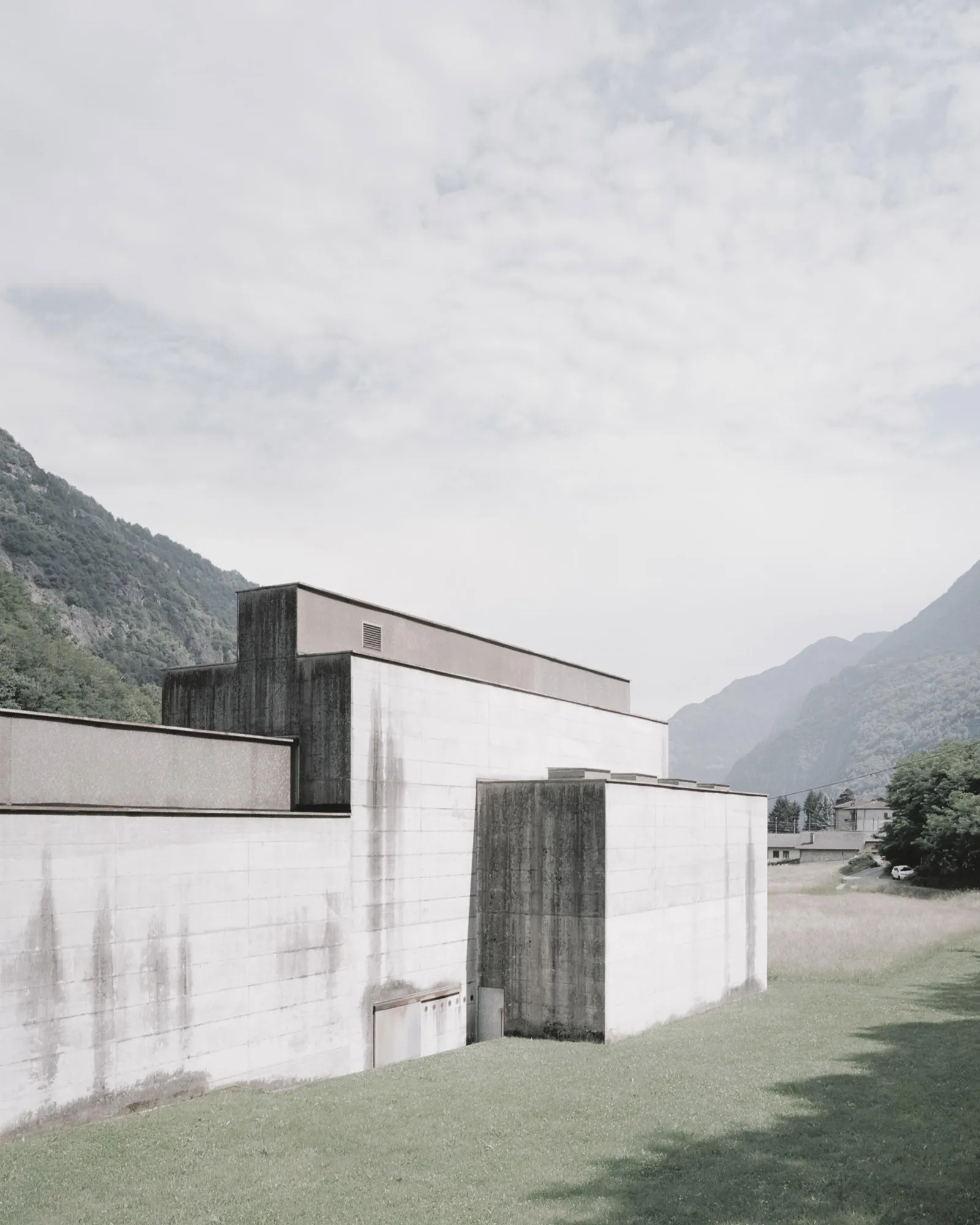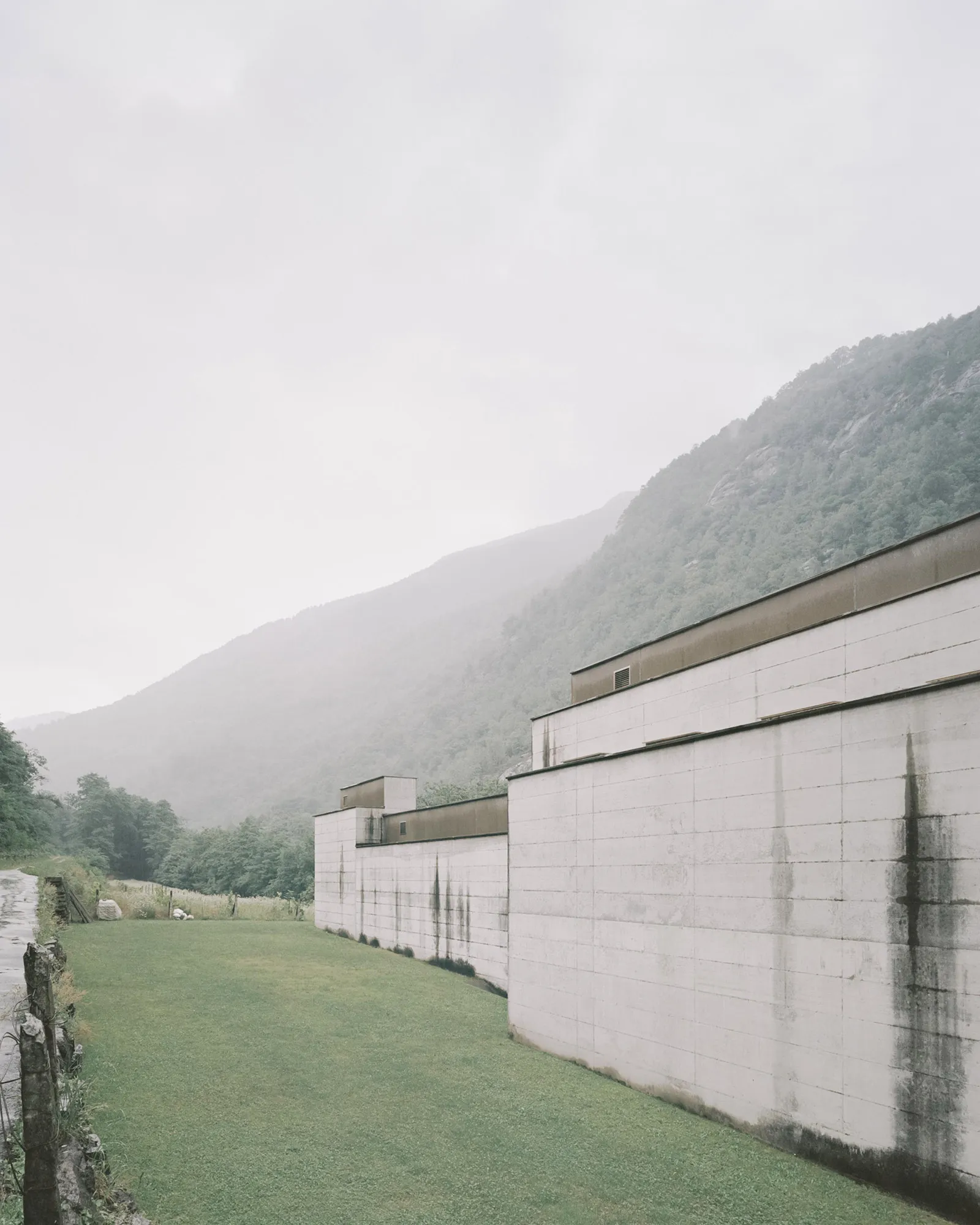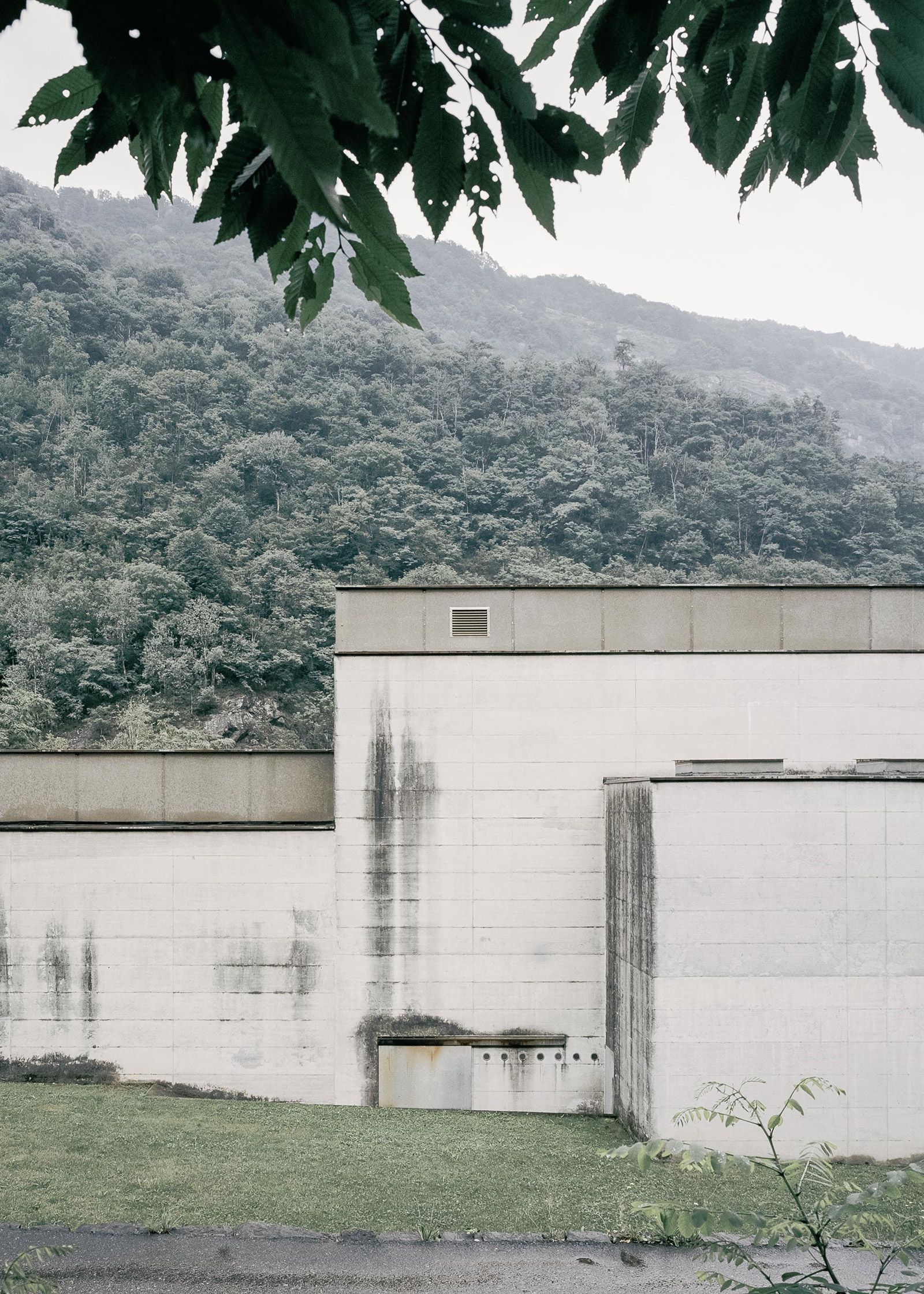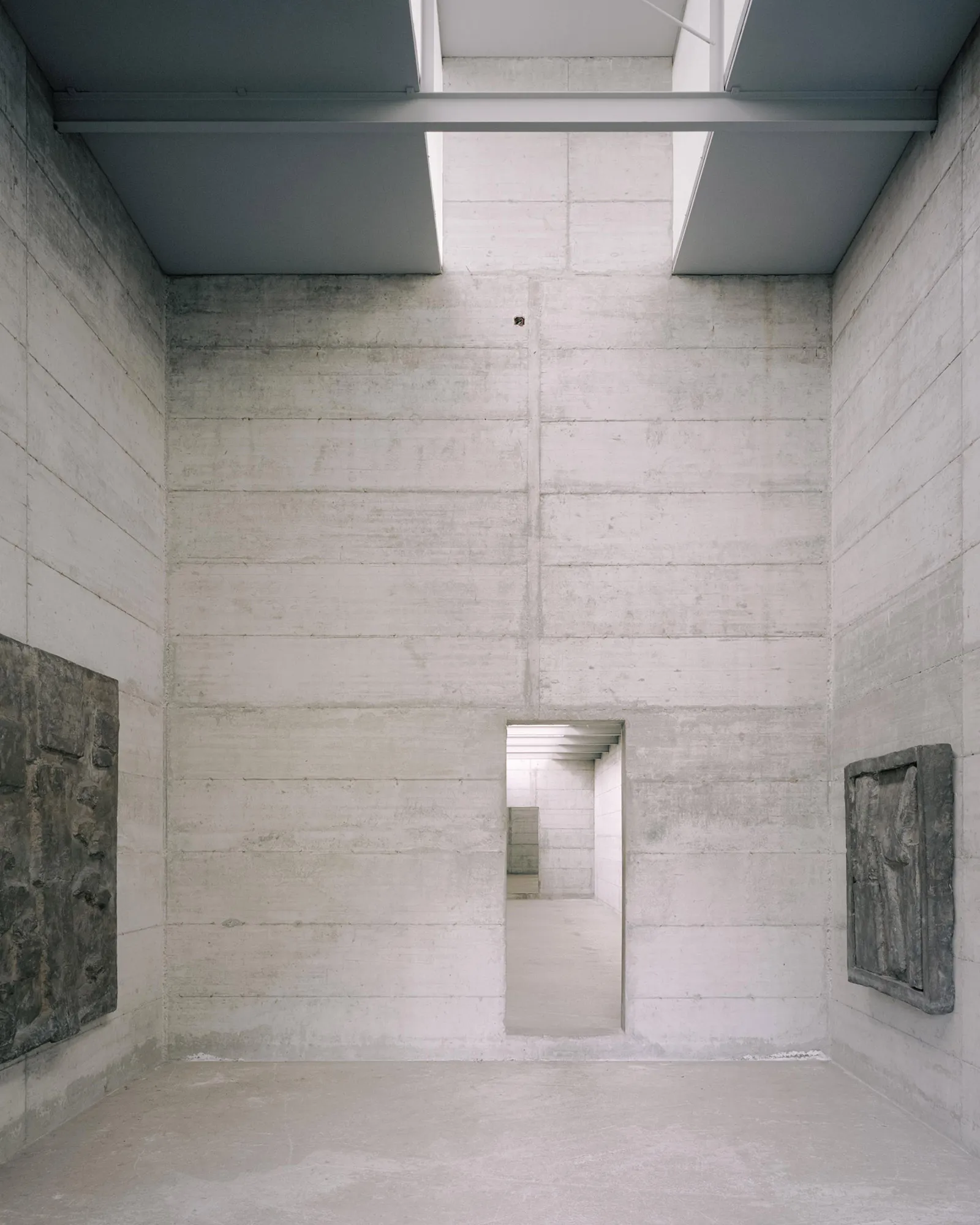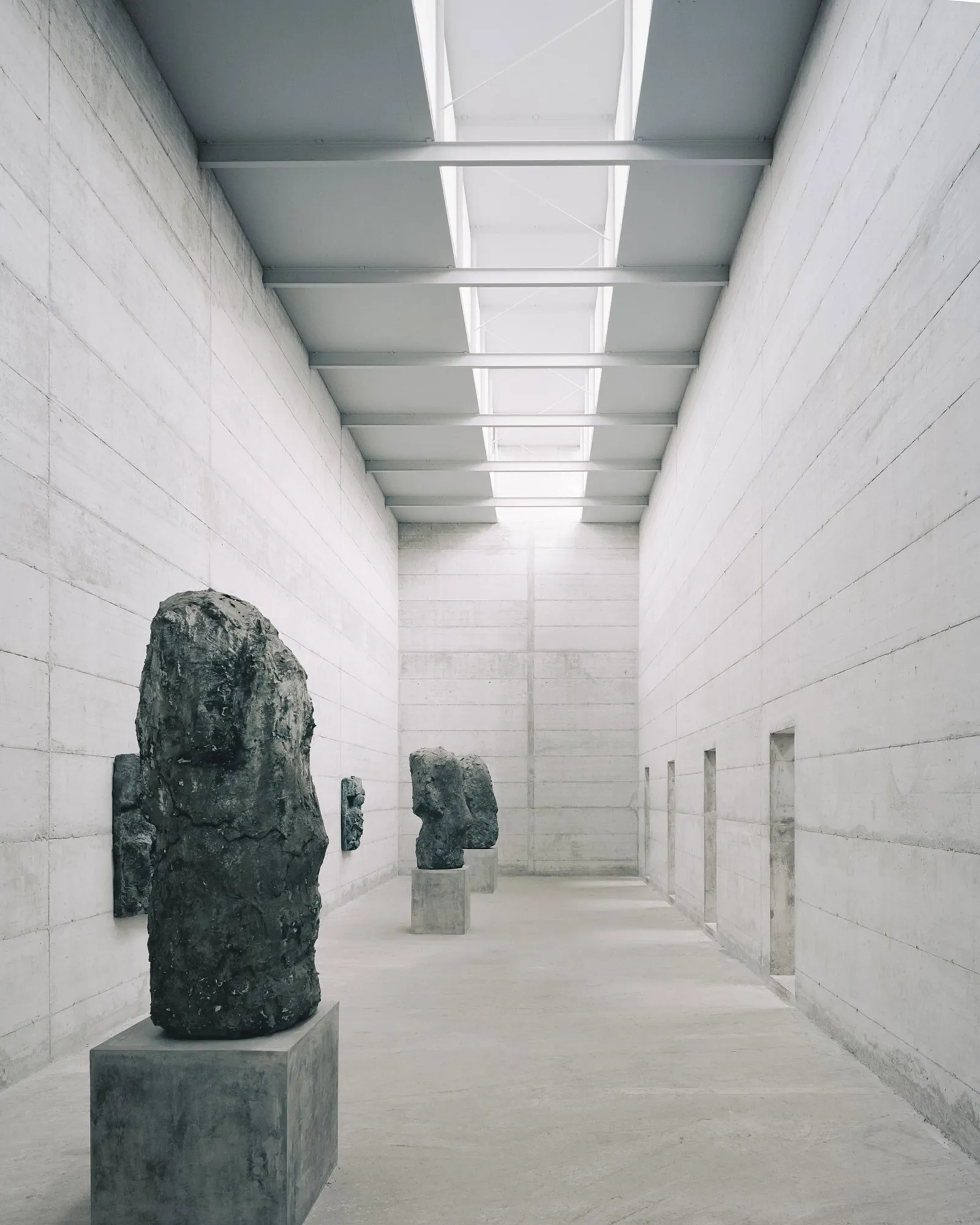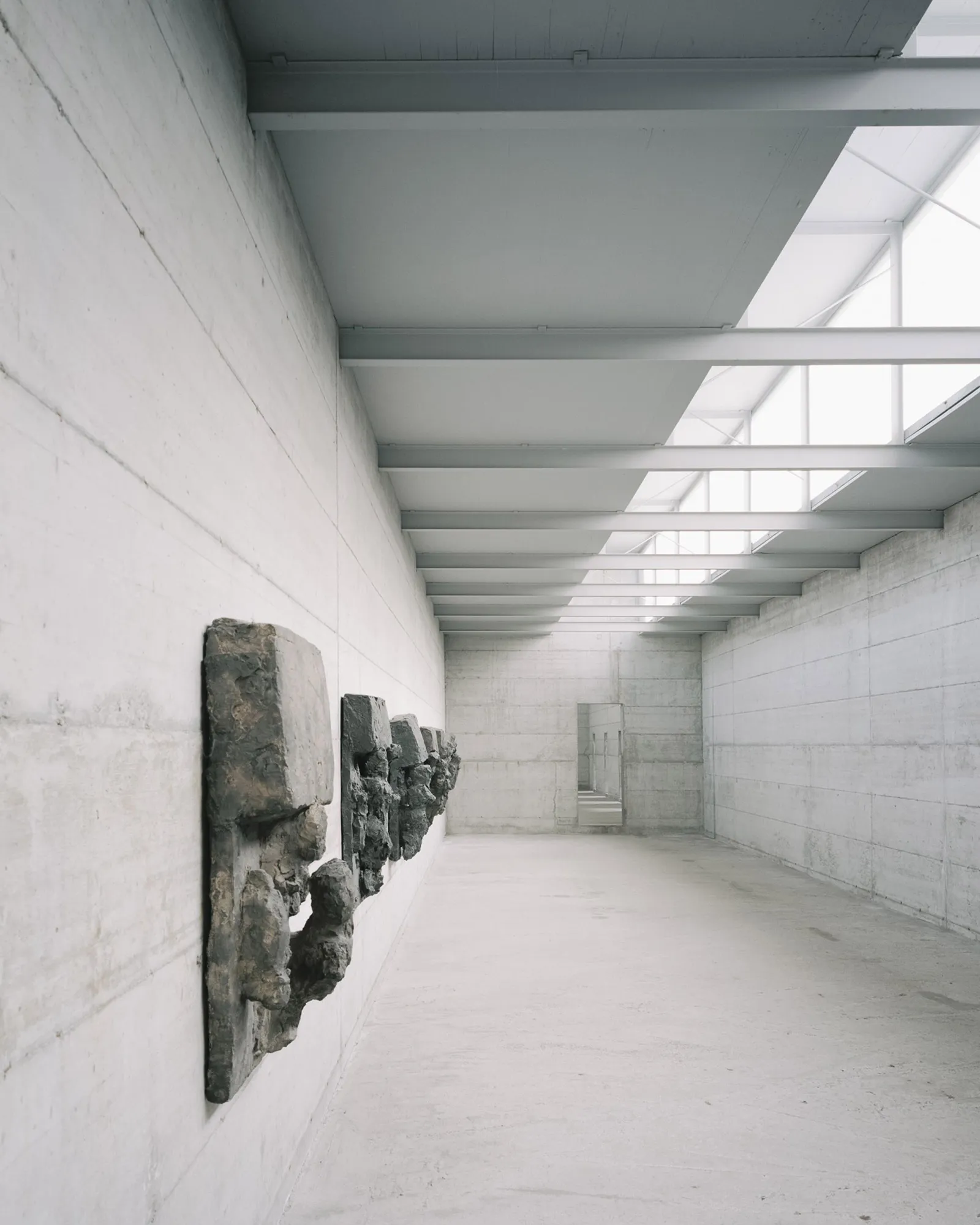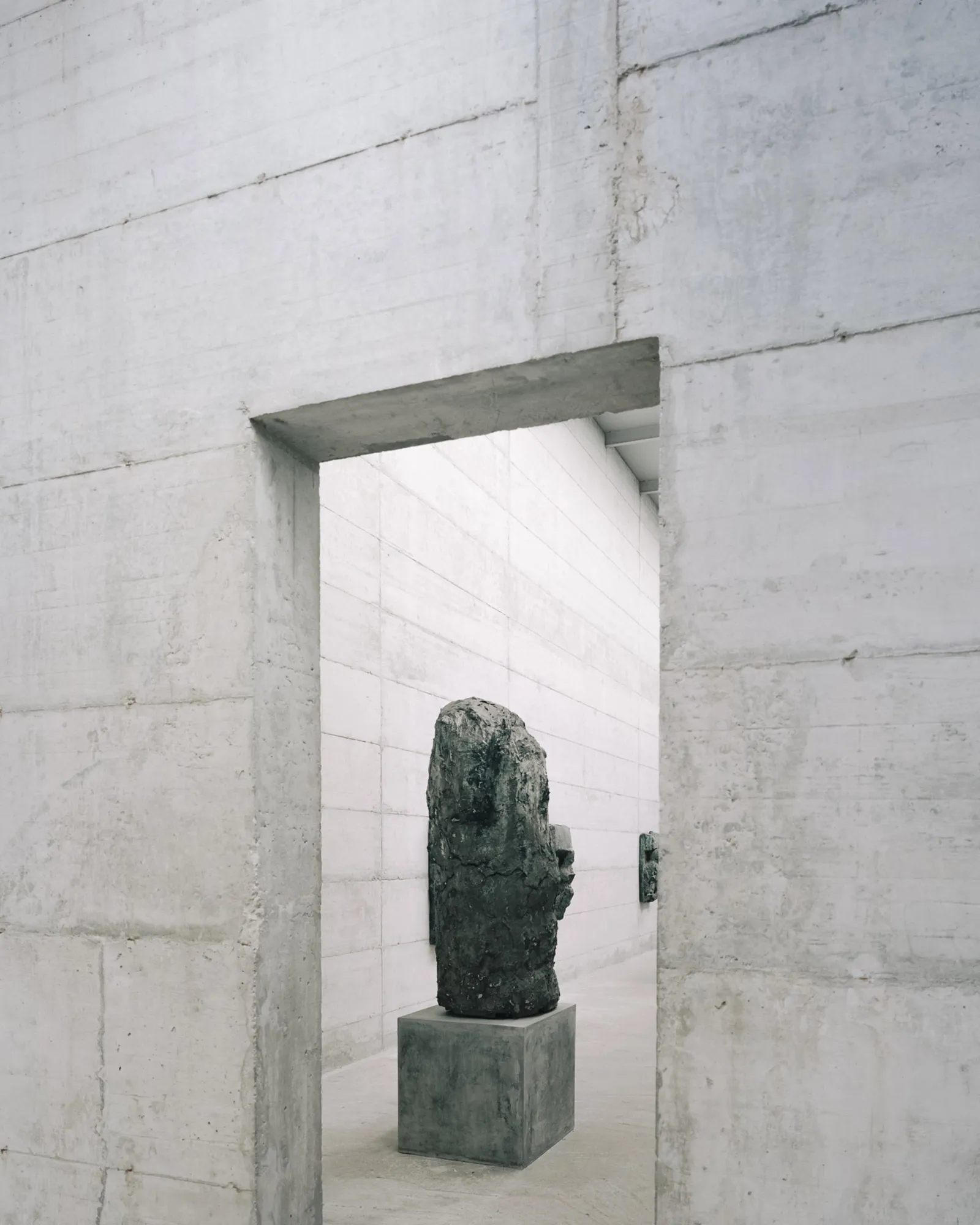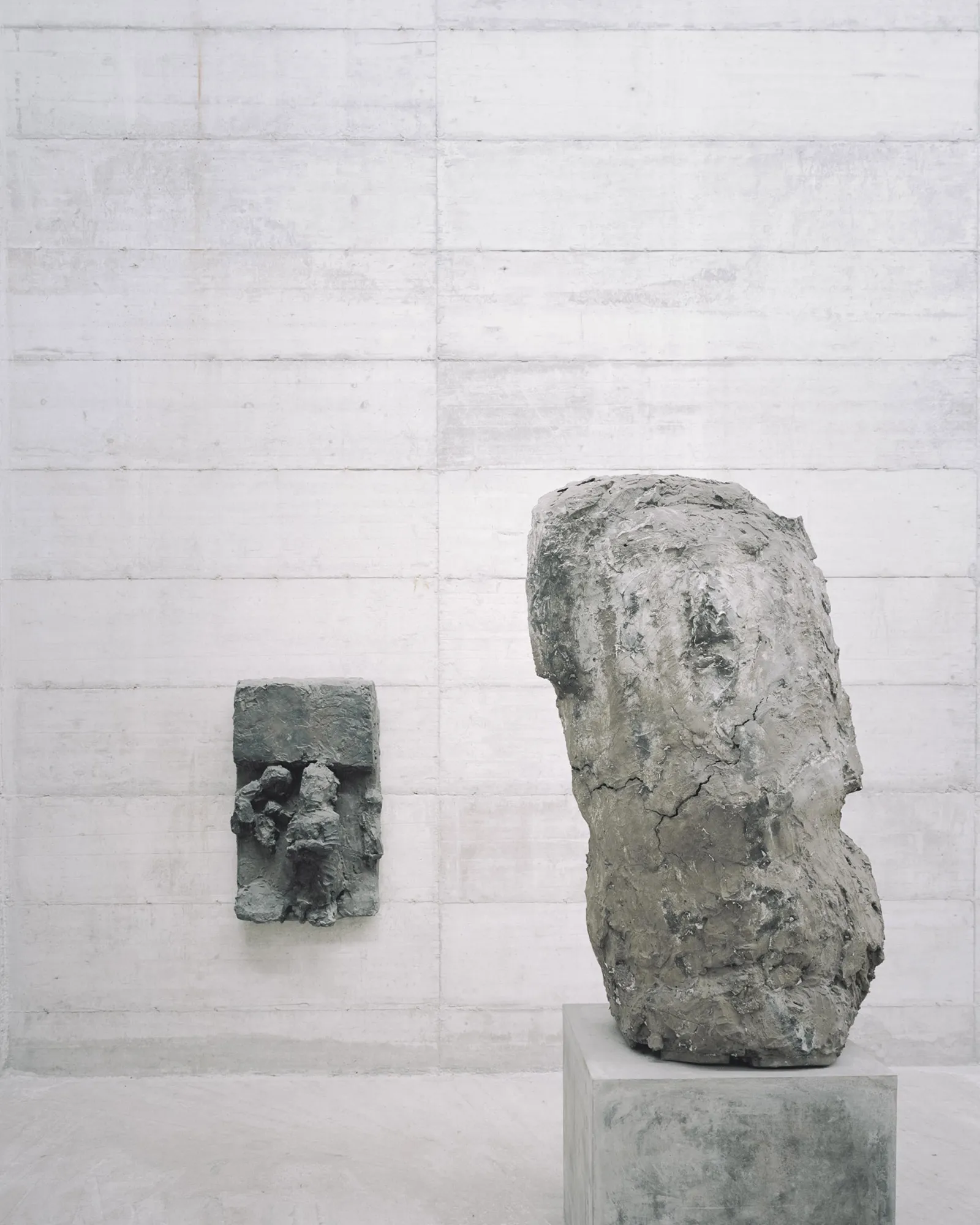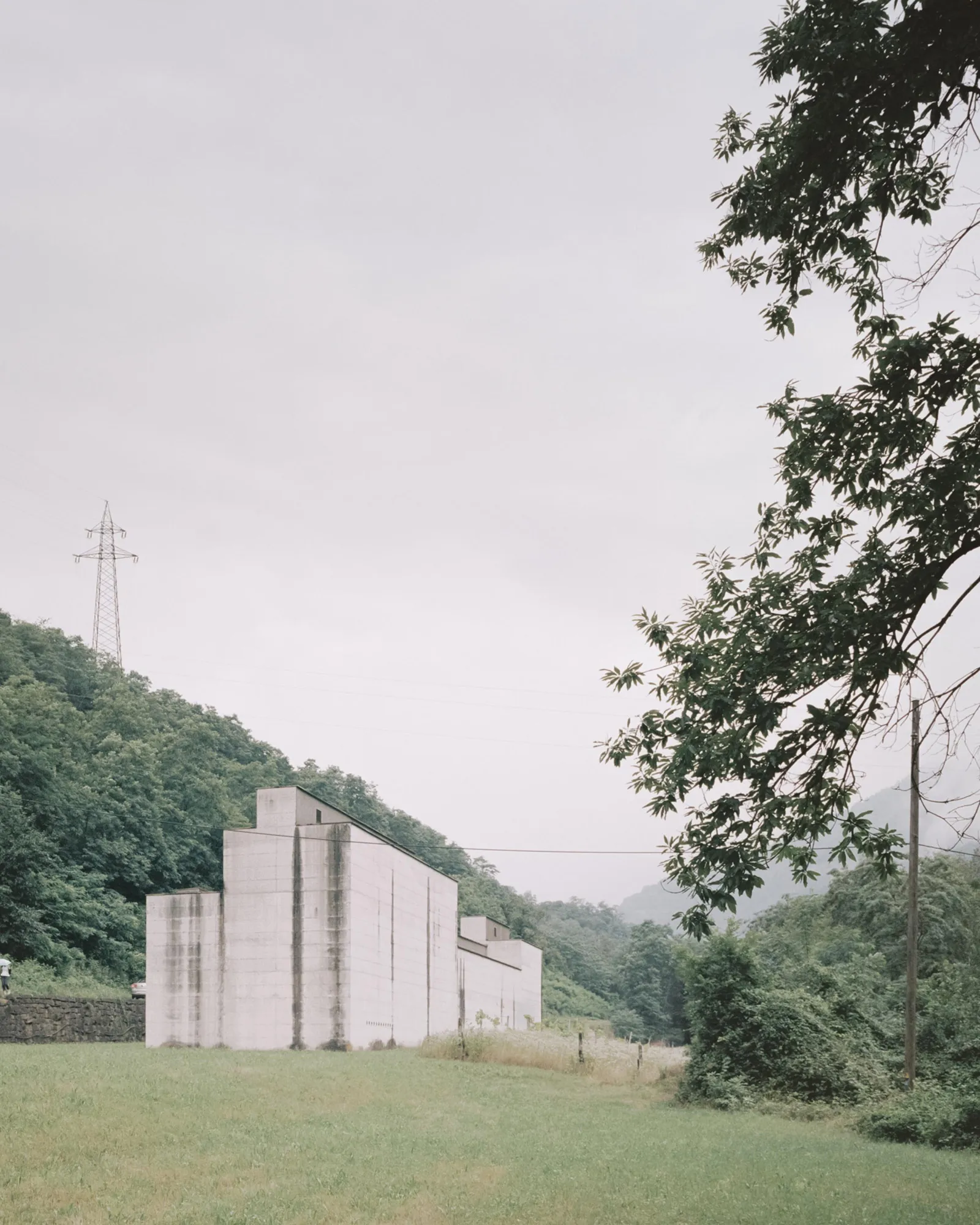In the secluded Alpine valley of Giornico, Switzerland, stands La Congiunta, Peter Märkli’s uncompromising concrete structure completed in 1992.
Commissioned explicitly to house the sculptures of Swiss artist Hans Josephsohn, the museum's form evokes neither grandeur nor spectacle but embodies a deliberate practice of architectural minimalism, rooted in an intense engagement with materiality, light, and space.
Märkli's museum emerges as a monolithic presence in a landscape steeped in historical resonance. Eschewing imitation, the architect distilled the vernacular solidity of the Romanesque churches and stone buildings nearby into an elemental modern abstraction. This autonomy, aligning closely with the sensibilities of Louis Kahn and Adolf Loos, positions La Congiunta as a profound yet subtle commentary on timelessness and permanence.
The spatial narrative within the museum resembles a contemplative journey. Visitors traverse a series of connected chambers along a central axis without an introductory foyer. The sequence is carefully orchestrated through alternating spatial compressions and expansions, choreographing a perceptual experience that shifts between tension and tranquility. Untreated concrete walls, bearing the tactile impressions of wooden formwork, echo the rawness of Josephsohn's sculptures, creating a palpable dialogue between container and content.
Rejecting modern museological conventions, La Congiunta employs sparse natural lighting through narrow slits and clerestory openings to animate the sculptural forms and architectural surfaces. The deliberate absence of artificial lighting, heating, and ventilation accentuates sensory awareness, underscoring the museum’s role as an instrument for perception. Sculptures appear integrated rather than exhibited, their quiet presence reinforcing the building’s contemplative ethos.
La Congiunta's asceticism cultivates an intensely personal engagement. It eschews curatorial interference, creating a phenomenological experience that demands focused introspection from its visitors. The structure does not merely contain art; it is inseparable from it, dissolving into an environment defined by silence, stillness, and contemplation.
Although relatively unknown outside specialist circles, La Congiunta’s influence reverberates profoundly among architects and critics alike. Celebrated as a paradigm of phenomenological architecture, it asserts an alternative vision to spectacle-driven design, emphasizing elemental qualities of mass, space, and light. In Märkli’s oeuvre, La Congiunta remains unmatched in its quiet radicalism—a rigorous statement on architecture's enduring capacity to mediate the human relationship with art, landscape, and the self.


